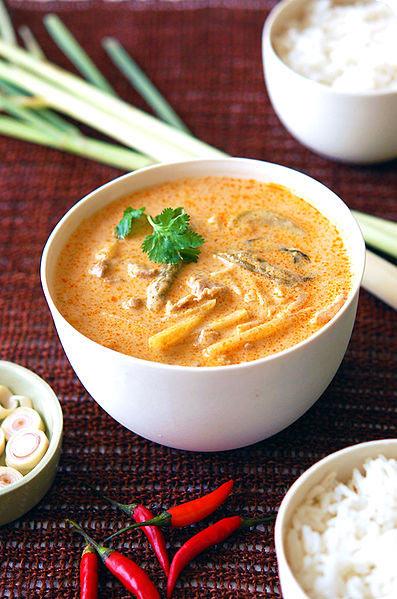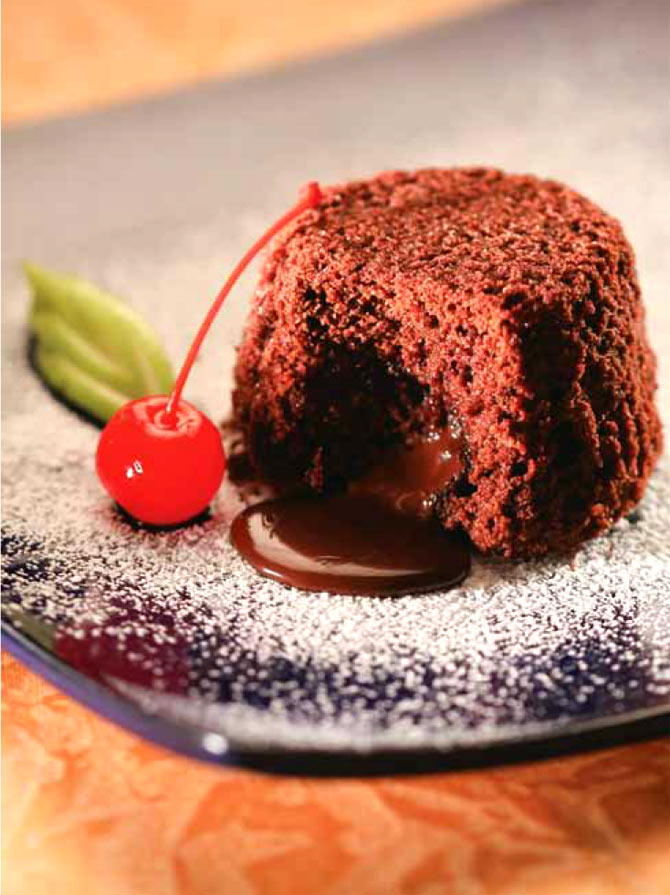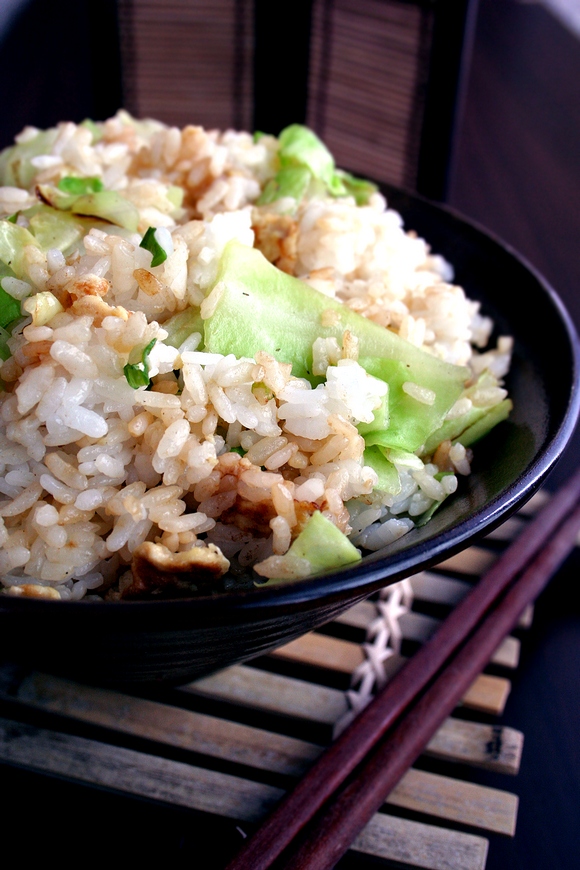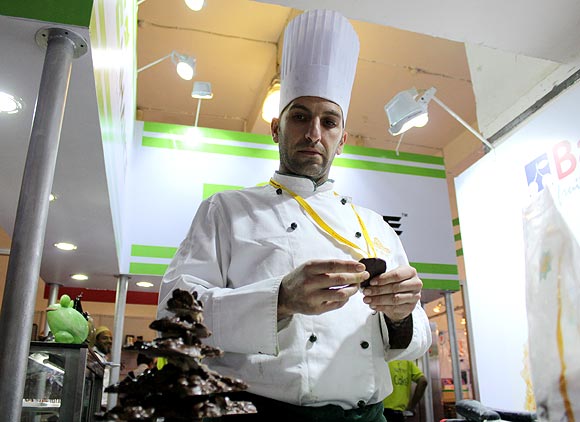 | « Back to article | Print this article |
What on earth is a food stylist and how YOU can become one
Styling for food is an emerging culinary profession where taste and aroma are not a criterion; it's the look that matters! Find out how you can pursue a career in it.
How often have you watched the Domino's Pizza ad on TV, and placed an order for home delivery?
Is it the crust with oodles of gooey cheese, filled inside, or the black olives, crisp capsicum, golden corn and fresh tomato toppings, that look irresistible?
If these visuals make your mouth water, Saba Gaziyani, India's well known food stylist has done her job well.
Chef to food stylist
Food styling happened by chance to Saba 15 years back when one had not even heard of food stylising as a profession.
She was working at The Leela hotel as a chef when she got a call to style food for a TV commercial.
"This was for Captain Cook Atta, a two-day job, where they wanted to shoot the process of making phulkas. I readily did it!" she recalls.
Through word of mouth, she began to receive more assignments, and started spending more time as a food stylist.
Today Saba Gaziyani has worked on all international food brands in the market.
Please click NEXT to continue reading...
What on earth is a food stylist and how YOU can become one
Chef versus Food Stylist
While chefs prepare food to be consumed, a food stylist makes food for the camera.
So, food styling is an extension of being a chef, however, the roles can be quite different.
A chef prepares gastronomic delights that taste great and often are a delight to look at as well.
A food stylist translates the chef’s vision from a three dimensional dish to a two dimensional photograph.
The critical element of aroma is not present in a photograph, so the food stylist works to enhance other factors to compensate for this.
The food stylist understands the camera’s perspective and the limitations of the medium and works to maximise the impact of the dish in photography.
This often involves substitutions and slightly different interpretations of the ingredients to convey the right message.
Multiple presentations
So, while a chef can specialise in a particular cuisine, a food stylist does not have that luxury.
She or he has to prepare any and every type of food and make sure that it looks absolutely fresh and enticing.
Also, a food stylist should be able to visualise and conceptualise several presentations for the same dish.
"One should be able to present even a simple glass of orange juice in several different ways. Lastly, any food stylist no matter how good needs to be supported by a good photographer. Because no matter how good the food looks to the naked eye, it is the photographer who will make the camera highlight its beauty and bring the texture and flavour across," says food stylist Mugdha Savkar.
What on earth is a food stylist and how YOU can become one
Top skills and traits required
- Food preparation
- Food presentation
- Technical
- knowledge
- Creativity
- Aesthetic sense
- Patience
- Stamina
- Networking skills
Working with food products
"A food stylist becomes extremely important when working on food products even though I have a photographer and a chef on board,” shares Pradeep Devnath, Creative Director at agency Interbrand, who has worked on several good brands.
Sometimes the food product is not good to look at; a food stylist’s job is to make it look appealing to the camera. The food should look tempting and mouth-watering.
“It is very important at times to let the audience know what has gone into making the food item. Here it’s the job of the food stylist to make sure that every ingredient is visible in the photograph or on film,” explains Pradeep.
Likewise the presentation of the food item has to be very innovative and different from the way the food item is traditionally served.
A food stylist uses his or her discretion on what garnish or props goes with what food item.
S/he is involved right from pre-production to post production. A food stylist thereby makes the job of the art director easy.
What on earth is a food stylist and how YOU can become one
To train or not to train
While there are some institutes abroad which do offer food styling courses nothing of that sort is available in India as yet.
For those who wish to pursue this as a career, you could begin by acquiring some formal education in culinary.
This is likely to give you basic technical knowledge of how different foods, ingredients, temperatures affect each other.
Mugdha Savkar who did a Diploma in Hotel Management & Catering Technology from the Naval Institute of Technology in Mumbai feels that if you haven’t studied food, it becomes difficult to handle and control it in the different environments it is set up for shoots.
So, while she did not learn styling in her institute, hotel management gave her the necessary technical knowledge of food, without which she would not have been able to style food.
"Over time, I have come to believe that food has a mind of its own. There’s just no telling how it will ‘behave!" she observes.
“But with technical knowledge, one cannot only foresee problems but also have a good back-up plan ready,” she adds.
Innovating on the job
Shubhangi Dhaimade, a veteran food stylist who has worked on brands such as HUL, Nestle, Pepsico, Coke and Godrej Agrovet, has no formal education in food styling.
She learnt everything on the job.
“For one of the TV commercials, my client wanted vegetables to go into the water and then pop up. Now, a capsicum would float when put into water. So I had to use a syringe and inject water into the capsicum so that it would sink and then pop up,” she recalls.
Sabas offers some staunch advice to hospitality/culinary students.
"I feel that food stylists need to unlearn a lot they have learned in school, because here the end result is not that important than the process itself. Taste is not a criterion and food is looked at a micro level,” she explains.
What on earth is a food stylist and how YOU can become one
Getting into the profession
You could assist a food stylist as Mugdha did when she was still in the first year of college.
As a student, she assisted her professor Chef Michael Swamy, who had just returned from London and had begun taking on styling assignments.
When she passed out from college, he offered her a job as a food stylist and researcher on his team, and they have been working together for 10 years now.
Who hires food stylists?
- Advertising agencies
- Food packing companies
- Publishing houses
- Hotels and restaurants
- Production houses
- Design houses
- Film makers
- TV companies
Opportunities in the field
Initially, food styling was restricted to only ad films, print ads and food packaging.
Now stylists are required for cookbooks, magazines, and some hotels also hire stylists to design their food display.
“Any communication for food requires a stylist, and we are also called in by food manufacturers, design houses, ad agencies, production houses, filmmakers and
restaurant owners,” adds Shubhangi, who apart from styling food for packaging, menus, food court, cafes, print ads, TV commercials, also had the opportunity to work on films.
“For the film Jodha Akhbar I was required to style the food for various scenes in the film. I had to keep in mind the aesthetics of the food from that era.
This required me to do a lot of research since it was a period film,” shares Shubhangi.
New horizons
MasterChef India, a food show on Star Plus channel gave Mugdha Savkar the opportunity to work as a food producer wherein she assisted in designing the tasks for the contestants.
“It required stepping out of my comfort zone which is food and stepping into a totally new zone -- television and balancing them both. We would try every task on ourselves before it made it to the screen and due to this I understood just how much I could stretch my imagination and my skill set,” shares Mugdha.
Freelancing lifestyle
Currently no companies hire a full-time food stylist. This is an assignment-based or a freelance job.
One should have immense patience since it’s a demanding job.
A food stylist has to take direction from client, photographer, art director, cinematographer and others. One has to be very open-minded and flexible.
What on earth is a food stylist and how YOU can become one
Challenges on the job
The job of a food stylist is always full of challenges.
Shoots are often fast-paced, in high stress environments and it is critical for stylists to keep their cool and deliver under pressure.
External factors greatly influence the project and the stylist needs to be able to improvise and guarantee delivery.
Ingredients may not be always available, clients may change their requirement at the last minute, the stylist may have a personal emergency, a good photographer is not available for the shoot etc.
But a true professional will deliver a quality product, no matter what.
“Also, till you make your mark, clients expect you not only to work on a budget -- read almost free -- but also expect you to copy someone else’s work. By far the biggest challenge is putting up with art directors who copy a western concept and want the stylist to ape someone else’s work -- without any respect for the stylist’s creativity,” concludes Mugdha.
Ultimately, students must pursue food styling only if it’s their passion and not their last option.
Remuneration
Saba got paid Rs 1,000 for her first assignment as a food stylist; this was 15 years ago.
Today the food industry is mushrooming fast.
Restaurant chains are opening up every day in every nook and corner of the city.
"If you are good at your work then you can easily command the money. Today people wait for me if I am not free. They change their schedule to accommodate me," asserts Saba who is supposedly the highest paid food stylist in India.





